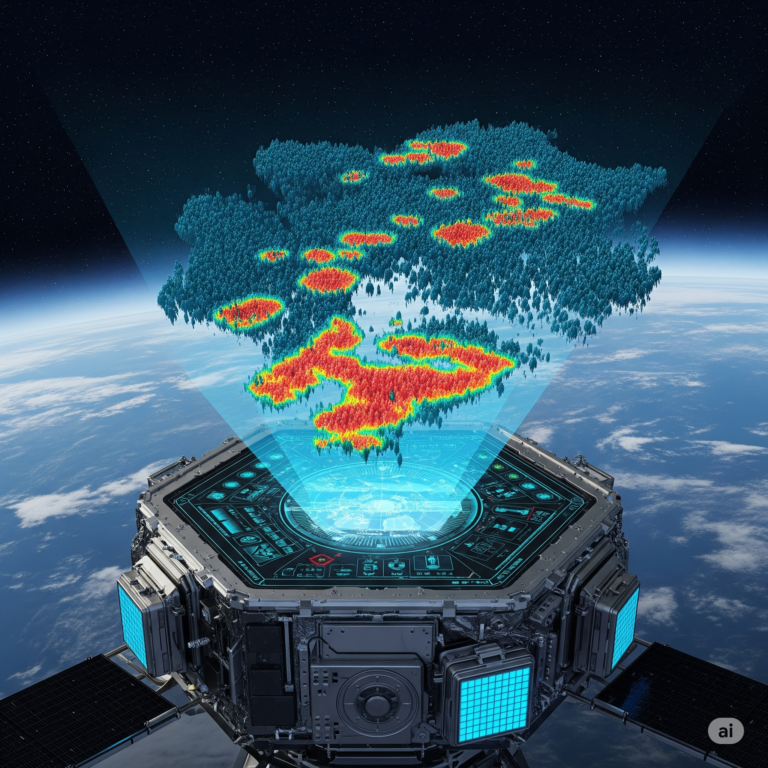Artificial intelligence (AI) continues to revolutionize every sector of modern life, from healthcare to finance and autonomous vehicles. But beneath its incredible capabilities lies a challenge that has long stifled progress: the immense energy and time required to train complex neural networks. That may soon change. Engineers at the University of Pennsylvania have developed the world’s first programmable chip capable of training nonlinear neural networks using light instead of electricity. This revolutionary advancement in silicon photonics could redefine the future of AI computation—making it faster, more efficient, and drastically less energy-intensive.
What Is Silicon Photonics?

Before diving into the implications of the University of Pennsylvania’s innovation, it helps to understand the concept of silicon photonics. Silicon photonics is an advanced technology that uses photons—light particles—instead of electrons to transmit and process information. By integrating optical components on traditional silicon chips, it enables ultra-fast communication and lower power consumption.
Traditionally used in fiber-optic telecommunications, silicon photonics is now being reimagined as a core component for next-generation computing systems.
The Breakthrough: Training Neural Networks with Light
Until now, photonic chips have primarily been used for data transfer, not processing. The new chip from the University of Pennsylvania changes that by enabling actual AI training using light. Specifically, it supports nonlinear neural networks—a crucial step because real-world AI applications rely heavily on nonlinear functions like ReLU (Rectified Linear Unit), sigmoid, and tanh for decision-making and pattern recognition.
The key innovation lies in the chip’s ability to handle nonlinear activation functions in the optical domain, which had long been a bottleneck in optical AI systems. By integrating optical nonlinearity within a programmable architecture, this chip can now process inputs and adjust internal weights—an essential part of AI learning—purely using photonic signals.
Why Nonlinearity Matters in Neural Networks
Neural networks mimic the way the human brain processes information. Linear models are limited in the complexity of functions they can represent. Introducing nonlinearity allows the network to capture intricate patterns and relationships between data points.
In practical terms, nonlinearity enables AI to:
- Distinguish between different objects in images.
- Understand natural language nuances.
- Predict complex behaviors in financial markets.
Without nonlinearity, even the most layered neural networks would fail to solve problems beyond basic classification or regression.
Speed of Light vs. Speed of Electricity
Electrical signals in traditional chips move at less than 1% the speed of light and generate considerable heat, limiting scalability and efficiency. Light, on the other hand, travels faster and can carry more information simultaneously through multiplexing techniques.
Advantages of light-powered AI chips include:
- Ultrafast processing: Light operates at terahertz frequencies.
- Lower energy consumption: Reduces the carbon footprint of massive AI training tasks.
- Parallelism: Multiple light wavelengths can be processed simultaneously, boosting throughput.
Energy Efficiency and Sustainability
According to estimates, training a single large AI model like GPT-3 consumes as much energy as a small town in a year. This level of energy usage is neither sustainable nor scalable.
The photonic chip from UPenn offers a compelling solution:
- Reduced heat generation eliminates the need for elaborate cooling systems.
- Lower power consumption extends battery life for edge devices.
- Environmentally sustainable approach to expanding AI capabilities.
This aligns with global goals for green computing and sustainable AI infrastructure.
Potential Applications Across Industries
The new programmable photonic chip has wide-ranging applications across sectors:
Healthcare
- Real-time diagnostics and medical imaging.
- Low-latency processing for wearable health monitors.
Finance
- Lightning-fast analysis of market trends and risk assessment.
Transportation
- Rapid data interpretation in autonomous driving systems.
Telecommunications
- Faster and more efficient routing of internet traffic.
Defense and Aerospace
- Low-power AI chips that can operate in extreme environments.
Challenges and Limitations
Despite its promise, the technology is not without challenges:
- Fabrication complexity: Integrating photonic components on silicon at scale is technically demanding.
- Cost: Manufacturing costs are currently high compared to conventional chips.
- Software integration: Existing AI frameworks are not yet optimized for photonic architectures.
However, these are surmountable as the technology matures and garners broader industry support.
The Road Ahead: What’s Next?
This photonic AI chip marks just the beginning. Researchers are already exploring:
- Hybrid architectures combining electrical and optical components.
- Quantum-enhanced photonic chips for exponential increases in computing power.
- Edge computing integration to bring real-time AI to mobile and IoT devices.
Collaboration with companies specializing in semiconductor manufacturing and AI software will be key to bringing this technology to commercial reality.
Expert Opinions and Industry Reactions
Dr. Nader Engheta, a leading researcher in the field, said, “This is a step toward neuromorphic photonic computing—where we mimic the brain using light instead of electricity. The possibilities are boundless.”
AI leaders from Google, NVIDIA, and IBM have also taken note, with some suggesting this could be the next Moore’s Law, shifting the focus from transistor density to photonic processing.
Conclusion: A Light-Filled Future for AI
The University of Pennsylvania’s programmable chip represents a transformative step in artificial intelligence and computing. By harnessing the power of light to train nonlinear neural networks, it breaks through long-standing limitations in speed, efficiency, and scalability.
While challenges remain, the direction is clear: the future of AI will be brighter—both literally and figuratively—with photonic technology at its core. This innovation not only accelerates the development of smarter machines but also paves the way for more sustainable, energy-efficient computing ecosystems.
Stay tuned—the age of light-powered AI has just begun.









+ There are no comments
Add yours